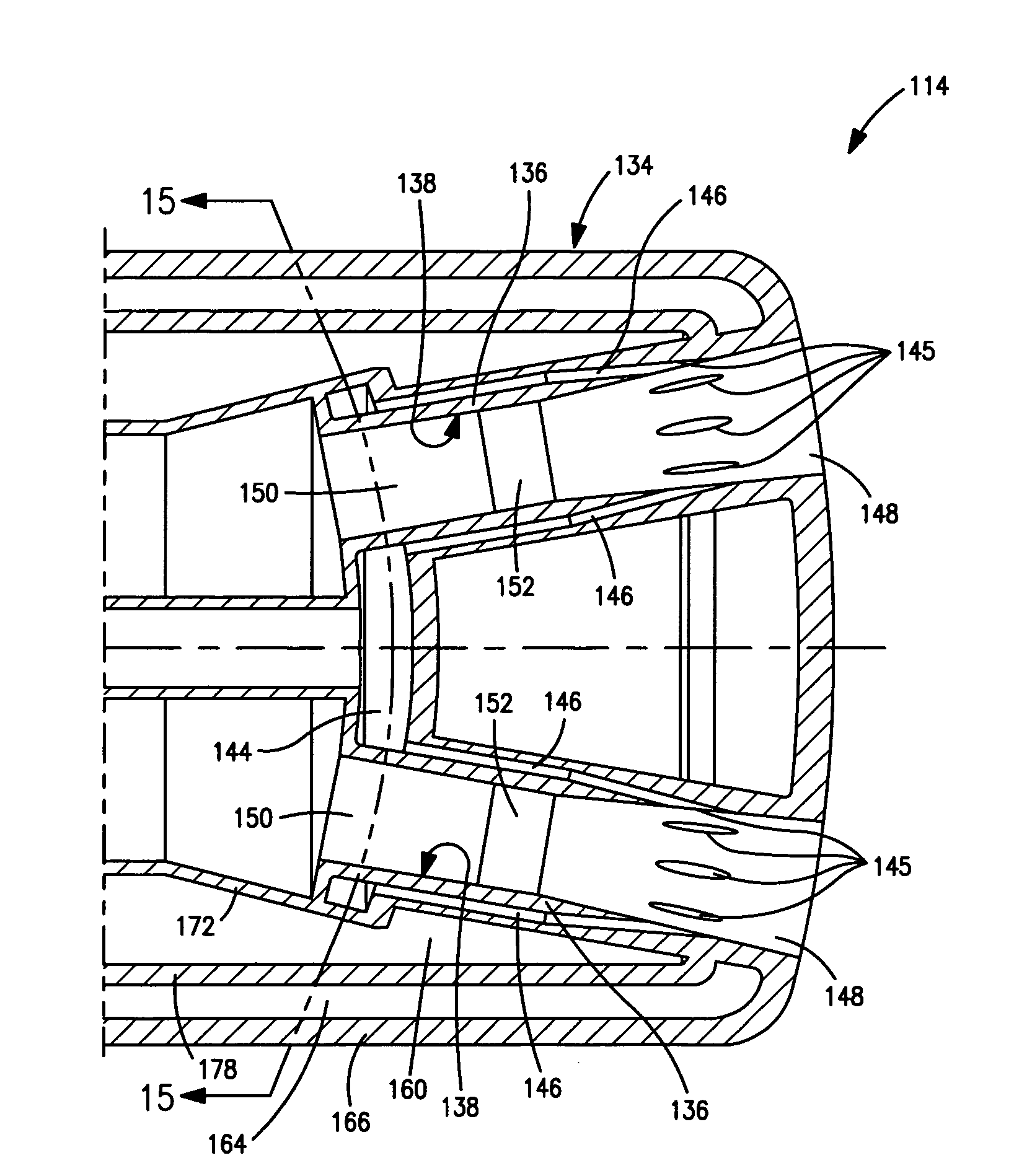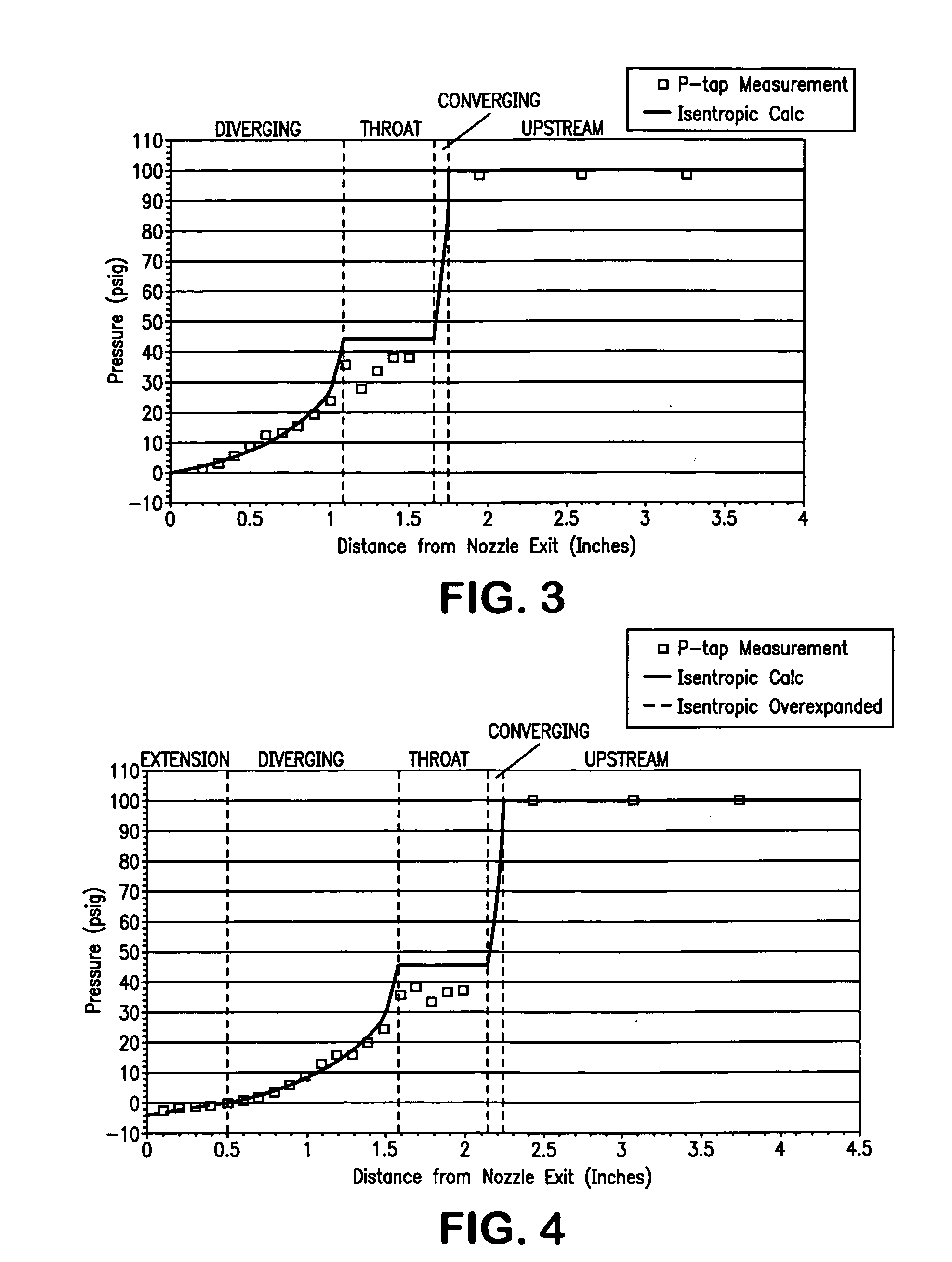Oxygen injection method
- Summary
- Abstract
- Description
- Claims
- Application Information
AI Technical Summary
Benefits of technology
Problems solved by technology
Method used
Image
Examples
Embodiment Construction
[0045]With reference to FIGS. 1 and 2, the operation of a prior art nozzle 1 that is used to inject a supersonic jet of oxygen into a metallurgical furnace is compared with the operation of a nozzle 2 in accordance with the present invention.
[0046]Nozzle 1 has a passageway 10 of converging-diverging configuration that includes a converging inlet section 12, a central throat section 14 and a diverging outlet section 16 that terminates at a nozzle face 18. When an oxygen stream is injected from a supply passageway 19 into converging inlet section 12 of passageway 10, it undergoes an initial expansion. If the pressure of the oxygen is above what is referred to in the art as “critical pressure” or a “Mach 1 expansion pressure” of the oxygen stream being introduced into nozzle 10, a choked flow condition is achieved in central throat section 14 in which the oxygen has achieved a sonic velocity. The term “sonic velocity” as used herein and in the claims means a velocity that has a magnitu...
PUM
| Property | Measurement | Unit |
|---|---|---|
| Angle | aaaaa | aaaaa |
| Angle | aaaaa | aaaaa |
| Pressure | aaaaa | aaaaa |
Abstract
Description
Claims
Application Information
 Login to View More
Login to View More - Generate Ideas
- Intellectual Property
- Life Sciences
- Materials
- Tech Scout
- Unparalleled Data Quality
- Higher Quality Content
- 60% Fewer Hallucinations
Browse by: Latest US Patents, China's latest patents, Technical Efficacy Thesaurus, Application Domain, Technology Topic, Popular Technical Reports.
© 2025 PatSnap. All rights reserved.Legal|Privacy policy|Modern Slavery Act Transparency Statement|Sitemap|About US| Contact US: help@patsnap.com



